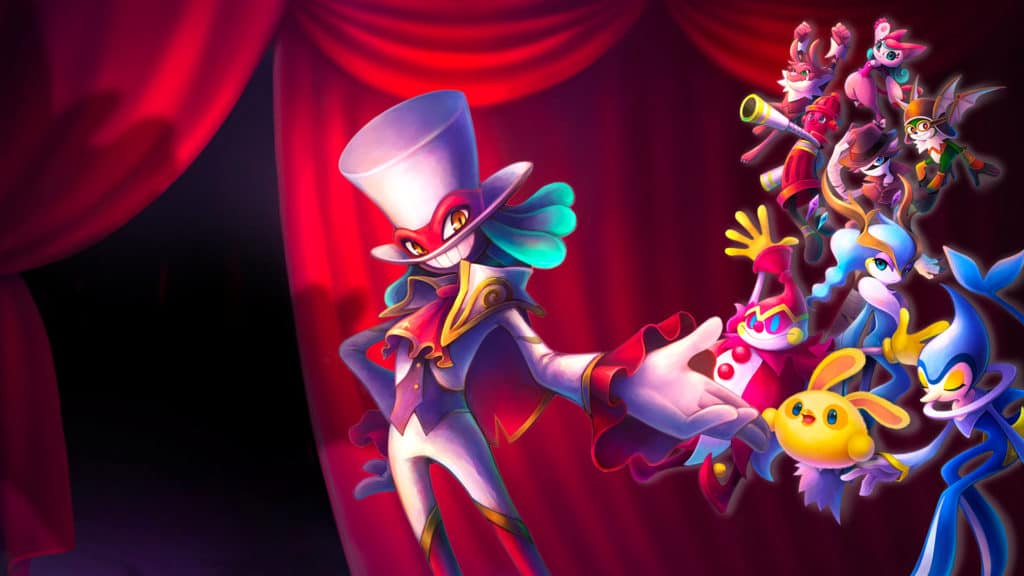Video Gamer is reader-supported. When you buy through links on our site, we may earn an affiliate commission. Prices subject to change. Learn more
Balan Wonderworld is the new game from Yuji Naka, not that you would know at a glance. It looks like an old game from Yuji Naka. Check out the character designs, by his longtime collaborator, Naoto Ohshima: noodle-limbed and toon-bright, with jumbo hands and feet, and a hero with a shock of back-brushed spikes. It is as if Naka, who created no less a figure than Sonic the Hedgehog, in 1991, were still stalled there, in the Evergreen Hill Zone of the past, tapping his foot in frustration. That chunkified style worked for Sonic, with his legs plugged into futuristic trainers and his finger wagging; here it just seems off. The protagonists, Leo Craig and Emma Cole, look as though they have been molded from clumps of cut-price CGI, and the story lumbers queasily around them, never falling into focus. If only Naka, staying true to form, had given the whole thing a dose of high speed; his work holds together only when it hurtles past our eyes, growing vivid with velocity.
The plot, such as it is, goes like this. Trudging one afternoon into a theatre, Leo (or Emma, depending on whom you choose to play) meets Balan—a mixture of green hair, rococo tailoring, and a grin that seems to float below the brim of the tall white monstrosity on his head. Think of him as the Cheshire Hat. Before long, Leo is spirited into the troubled inner realms of random people, easing the pains of their lives with platforming, dancing, and button-clattering mini-games. Does this count as a violation? Is Leo, like Psycho Mantis, diving into their minds and reading the memory cards of their private woes? The moral dilemma goes unprobed. Fans of Naka’s other championed game, Nights into Dreams, from 1996, will recognise this premise. Whether, along with that recognition, they breathe a sigh of boredom, at the recycling of fantasy, or they let out yips of adulation, at the return to cherished childhood ground, will be a matter of taste.

Personally, the opening minutes reminded me of Rayman, which also began with a top-hatted magician who whisked us to a distant land; only, he had the good manners to greet us with, “Hi folks! You want to know what’s going on? Let me tell you the story of Rayman!” Plus, it helped that his world brimmed with genuine wonders, whereas this one looks like a crummy computer-generated kids show. We get a farmer, fretting about an upcoming storm, whose thoughts are decked out with barnyards, bales of hay, and fields of glowing-green corn. Then, there is a woman who dives not just with dolphins but with a specific dolphin, which seems to have turned against her. Her memories, flooded by this amphibious heartbreak, are portrayed as watery obstacle courses, clouded with inky foes.
The action elsewhere, too, has a dropsical quality; Leo’s jump and his gait are governed by animations that treat the air as something to be waded through. It took me a while to work out what these movements reminded me of, and then it hit me: it was Sonic Adventure, a game that took on the third dimension as you or I might take on a beer belly, and in which a killer whale, crunching through a jetty, possessed more grace—seemed somehow more at home in the depths of the open air—than its hero. Aside from the platforming, which offers no real challenge or juice, there is a slew of swappable costumes, each granting powers to its wearer. The Elastiplant, for example, frames Leo’s face with petals and gives him a corkscrewing midriff, allowing him to extend upwards like Inspector Gadget. The Dainty Dragon outfit, meanwhile, has him pulling on an aqua bodysuit, complete with horns and tail, and hawking up gobs of fire. Bafflingly, it also strips him of the ability to jump. There is only one action button in the game, and, if your chosen skill is ground bound, you’ll need to change clothes (a surprisingly lengthy operation) every time you approach a leapable gap—not ideal in a jumping-centric genre.

All of which may leave you with a sense not only of dissatisfaction but of irritation—at the NPCs who dance obnoxiously on the spot and dissolve at your approach; at the banal music, by Ryo Yamazaki and Hironori Anazawa, which worms into your ear and refuses to wriggle free; and at the notion that we might excuse Balan Wonderworld its crustiness on the proviso that it is aimed at children. Why fob them off with lesser pleasures? Sit them in front of something good instead—a Super Mario, say, or, if you wish to show them a shining example of a developer at the height of his game, how about an old Sonic?
Developer: Balan Company, Arzest
Publisher: Square Enix
Available on: PS4, PS5 [reviewed on], Xbox Series X / S, Switch, PC
Release Date: March 26, 2021
To check what a review score means from us, click here.

